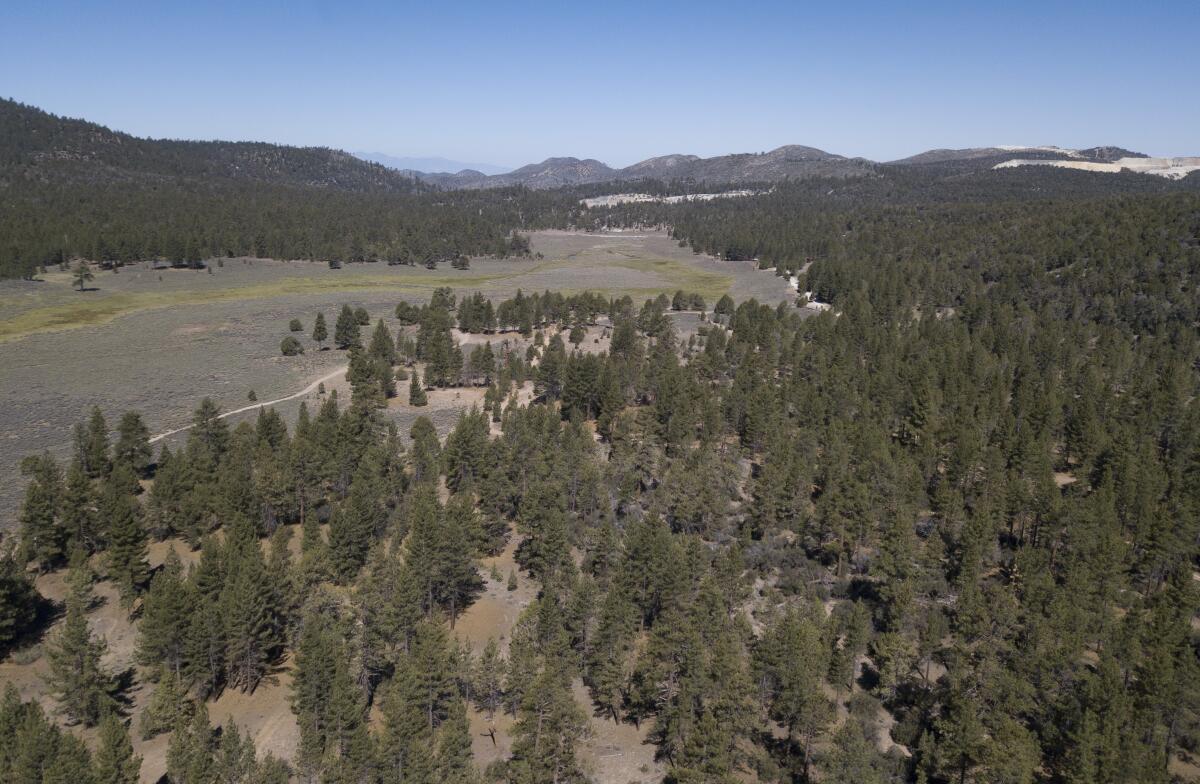Letters to the Editor: Why the Forest Service’s plan for Big Bear will falter

- Share via
To the editor: The U.S. Forest Service plan to alleviate fire danger near Big Bear Valley in the San Bernardino Mountains with heavy logging, bulldozing and mastication has been shown to be the wrong approach time and again. By smashing up the forest, they would not only destroy habitat but also likely exacerbate fire danger in the future.
Ecologist Chad Hanson wisely suggests hardening structures and removing nearby combustible materials. Moving out from town, the forest needs selective thinning of dead, weak and small trees. This would leave the larger healthy trees well spaced out.
After that, fire ecology management must be reintroduced to lower fuel loads of drought-stressed and overgrown shrub cover. This is what Indigenous residents did for millennia. If done right, the habitat will become vibrant with a healthy tree canopy, and the populated Big Bear Valley would be better protected from a devastating fire.
Furthermore, electric-bike trails have no business being here. For many reasons, hiking trails should not allow motorized vehicles in sensitive habitat areas.
Tony Baker, Rancho Palos Verdes
..
To the editor: There are no “wild” forests in the lower 48. Human activity, particularly fire suppression, has impacted them all.
For as long as humans have been on the North American continent, we have been managing the forests for good or ill. The European colonizers who first arrived on the East Coast wrote letters back home marveling at how productive the American forests were, never realizing that Indigenous people who retreated had been managing those forests for millennia.
Either we should withdraw from the continent entirely, which we may accomplish by creating an environment incapable of supporting human life, or we need to manage our impact intelligently with the aid of our ever-increasing understanding of the natural world and the psychological shortcomings of the human race.
If that means clearing some brush and adding a few e-bike trails, so be it.
John Sherwood, Topanga



